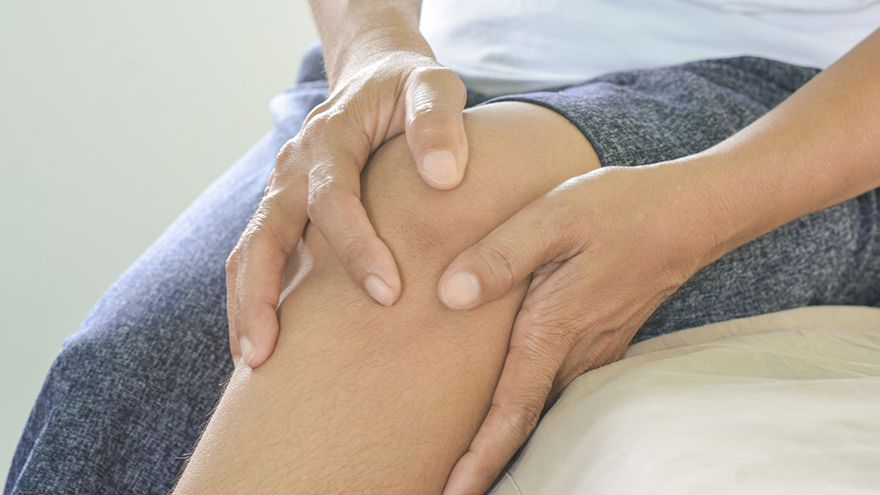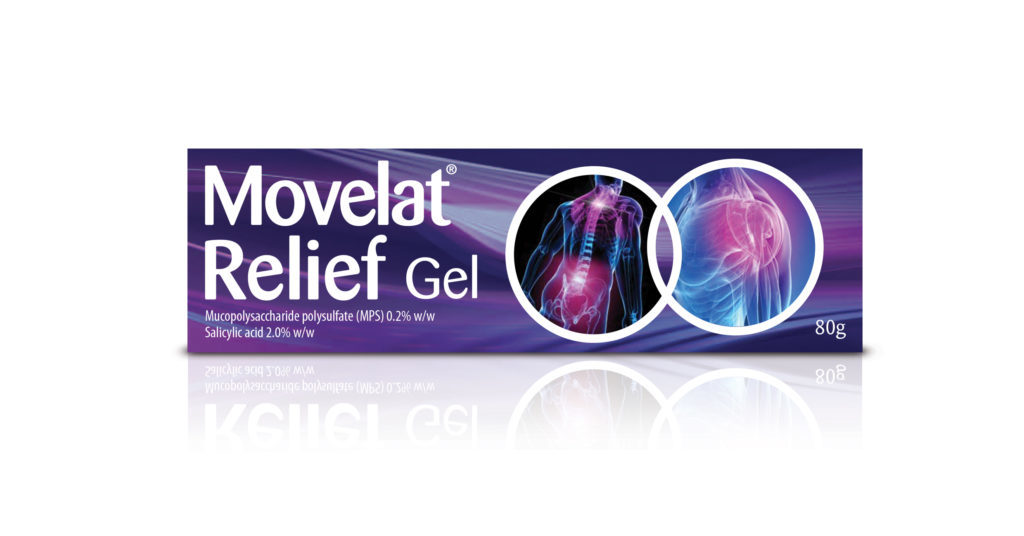Are You Living With Pain?

Living with pain can be extremely personal as everyone’s experience is different and there are a number of different conditions that can cause pain.
Dr Roger Knaggs, Fellow of the Faculty of Pain Medicine of the Royal College of Anaesthetists on behalf of Movelat Pain Relief, reveals the most common pain complaints:
1 Back Pain
“This is probably the most common chronic pain condition that people complain of; with the most common being lower back pain. Those that complain of back pain may also develop symptoms in the legs too.”
However, it can be difficult to get to the root cause of back pain, to enable effective treatment.
“A lot of back pain is non-specific, therefore quite often it’s very hard to find a cause or trigger for the symptoms, which is usually defined when the pain first starts developing. Often patients are unable to describe the precipitating event to the start of their pain, however if they can, it can be much easier to detect the cause of the pain.”
2 Neck Pain
“Neck pain is another common source of pain. This, too, can cause patients to develop related issues and pain in the arms.”
Neck pain can often be accompanied by headaches, which can be equally as painful, and for some people occur extremely regularly. Dr Knaggs shares his technique for combatting headaches:
“Relaxation can be good for combatting headaches. The most common type of headache is tension headache which is related to stress, anxiety and worry about a particular issue. You should think about what may be underlying the issue and use mindfulness to think more in the present. This is also a technique that you can do in the ‘moment’, at the very time that you are experiencing the pain.”
3 Joint Pain
“Joint pain is another common type of pain. Osteoarthritis is one of most common forms of joint pain. One of the reasons this is so common is that there is an increasing number of older people in the country. The most common types of pain for osteoarthritis sufferers is knee and hip pain. And the pain of osteoarthritis is a type of pain which can affect mobility and life.”
Whilst osteoarthritis can affect mobility, Dr Knaggs believes maintaining physical activity is essential to managing the condition as well as finding pain relief.
“One of the most important things for any sufferer of osteoarthritis is to maintain physical activity. If you are experience long-term (chronic) pain, you are not necessarily going to do any more damage by exercising, as long as you do so within your capacity.
“There are also topical creams and gels for the relief of pain. Topical treatments tend to have fewer side effects than systemic medicines. They also have benefits from a tolerability point of view and the side effects can be much less than other treatments. If you have localised pain, then again, they can be very effective.”
Topical pain relief includes products such as Movelat Pain Relief Gel & Cream £7.99 (80g), Boots, which provide targeted relief for local pain and inflammation caused by local pain and inflammation caused by rheumatic and muscular pain, and mild arthritic conditions.
4 Acute Injury Or Trauma
“Acute injury or trauma is the most common pain for younger generations. If people suffer from tissue damage a lot of chemicals are released which cause pain, however, these tend to be more acute than long term. Longer-term pain tends to be more related to an increase in sensitivity to the nervous system.”
However, it’s equally important to manage both acute pain and chronic pain as Dr Knaggs continues:
“In both acute and chronic pain, a more active approach to managing it is required. In both cases, a greater dialogue and recognition of conditions and approaches to treatment is necessary.
“There needs to be greater understanding and recognition of pain conditions and understanding the difference between acute pain and longer-term pain (chronic) and the differences in the approach to treatment. In both cases a more active approach is required.”
5 Neuropathic Pain
“Neuropathic pain is associated with damage within the nervous system. It can either be an impact on the nerves that go from a particular area to the spinal cord such as postherpetic neuralgia, which occurs after shingles.
“Another type of nerve pain that’s associated with diabetes is diabetic neuropathy. Localised damage and trauma to individual nerves can also cause neuropathic pain. There are also conditions that affect the spinal cord and the brain such as multiple sclerosis and strokes.”
Dr Knaggs continues to explain how the nervous system affects the sensation of pain:
“How you experience pain depends on personal experience. Your mind and body draws on the past experiences of what has happened to you. The large role that psychology and the nervous system has in how pain presents itself, makes it very difficult to make generalisations about how to manage pain. Beside traditional methods, we encourage patients to work with psychologists who are trained in the cognitive approach to give patients the skills to live better with their pain in the long-term.”








